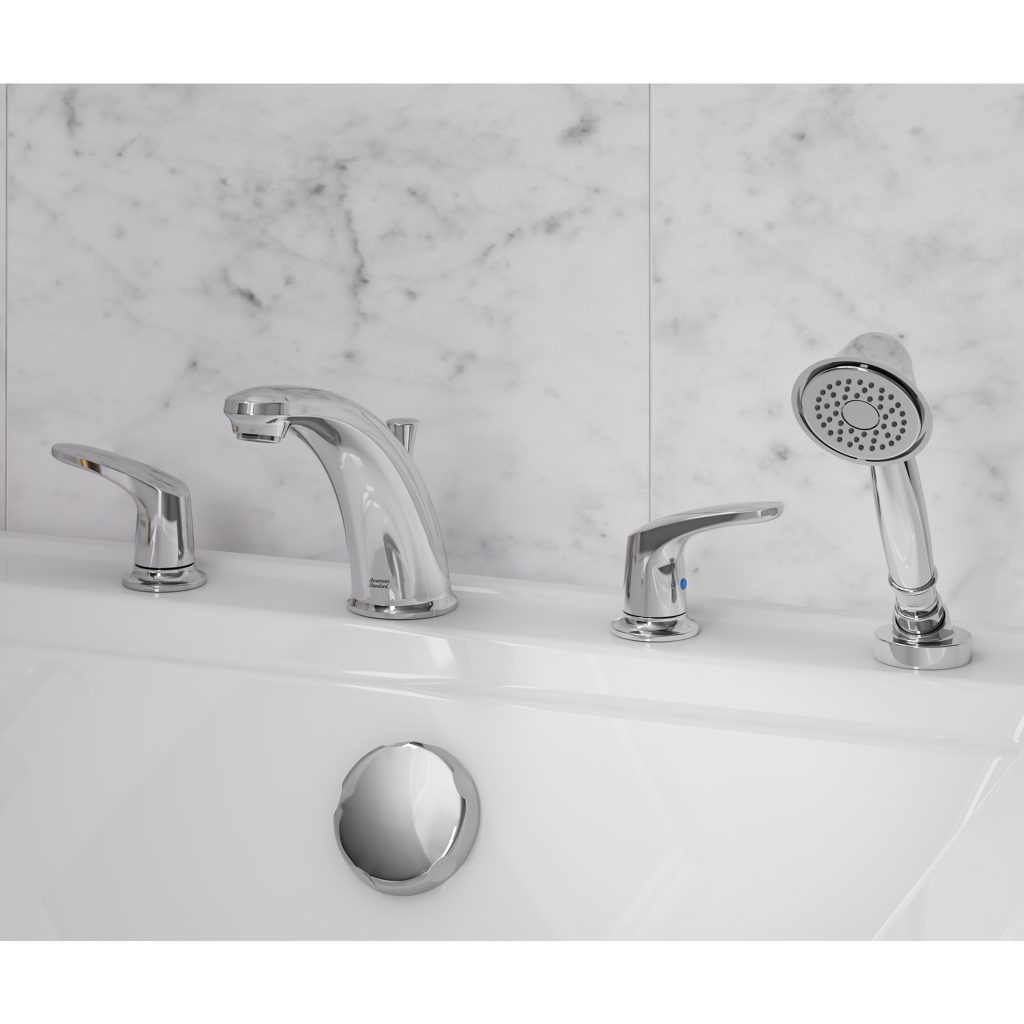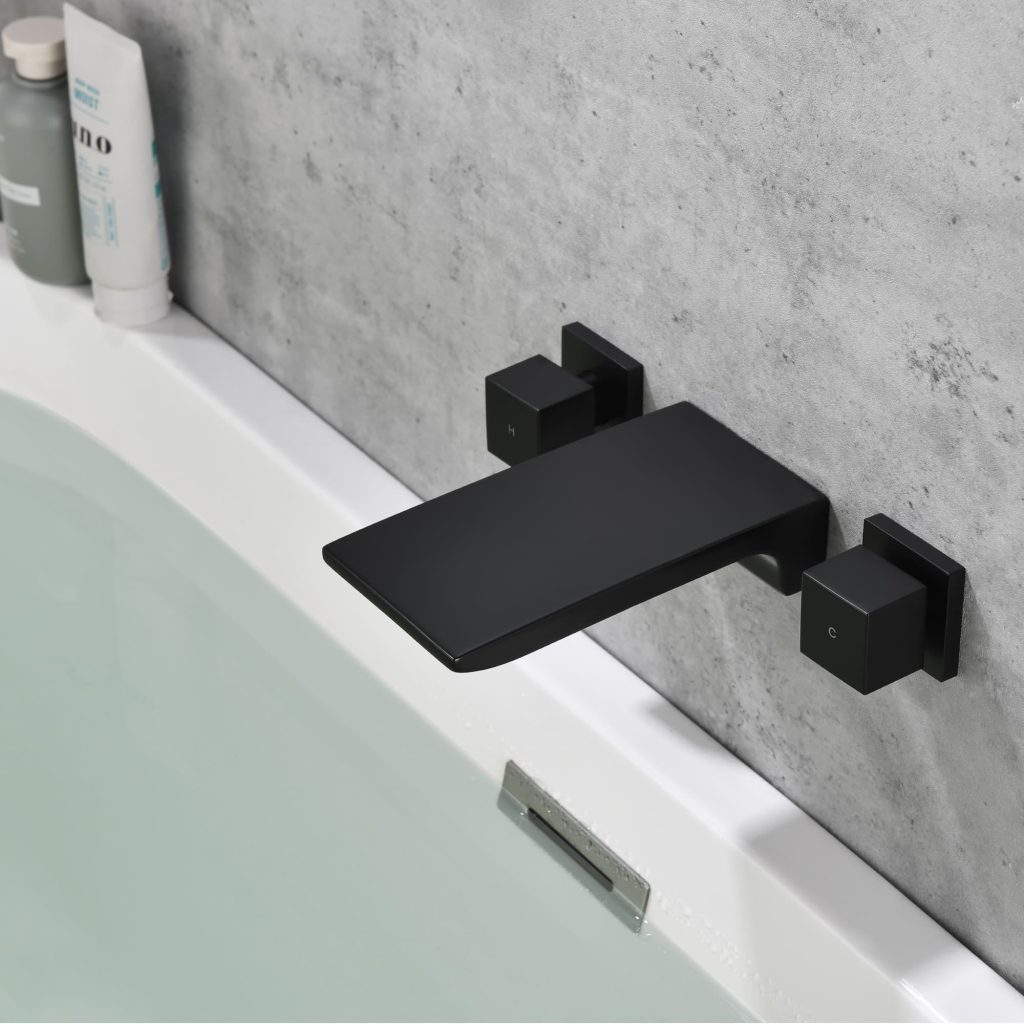Installing bathtub faucets can be a rewarding DIY project that not only upgrades the look of your bathroom but also ensures a refreshing and functional bathing experience. Whether replacing an outdated faucet or installing a new one during a bathroom remodel, the process requires careful planning, the right tools, and adherence to plumbing best practices. Here’s a comprehensive guide on how to install a bathtub faucet, covering preparation, steps involved, and finishing touches.

Preparation and Tools
Before you begin, gather the necessary tools and materials:
- New bathtub faucet set
- Adjustable wrench
- Screwdrivers (both flathead and Phillips)
- Pipe dope or Teflon tape
- Plumber’s putty or silicone caulk
- Basin wrench
- Hacksaw
- Pliers
- Flashlight
- Safety glasses
Ensure you have turned off the water supply to the bathtub. Locate the shut-off valves, typically found under the sink or near the bathtub, and turn them clockwise until they are fully closed. Open the faucet to release any residual water pressure.
Removing the Old Faucet
- Use a basin wrench to loosen the nuts securing the old faucet to the bathtub. These nuts are usually located under the faucet assembly.
- If the faucet is connected to the showerhead, disconnect it as well, following the same procedure.
- Remove any escutcheon plates or decorative covers around the faucet handles using a screwdriver.
- Once all connections are loosened, carefully lift the old faucet out of the bathtub.
Assessing and Preparing the Fixture Site
- Inspect the faucet holes in the tub deck or surround for any damage. Clean the area thoroughly to remove any debris or old putty.
- If replacing with a different faucet model, you might need to use an escutcheon plate to cover any unused holes or drill new holes based on the new faucet’s specifications.
Installing the New Faucet
- Apply a thin layer of plumber’s putty or silicone caulk around the base of each faucet component before inserting it into the corresponding hole. This helps create a watertight seal.
- Insert the faucet spout and handles into their respective holes. Secure them from below using the provided nuts and your basin wrench. Tighten them adequately but avoid overtightening to prevent damage to the fixture or tub.
- Connect the hot and cold water supply lines to the corresponding faucet valves, following the manufacturer’s instructions. Use pipe dope or Teflon tape on the threads to prevent leaks.
- If your faucet includes a showerhead, attach it to the spout and secure it in place according to the manufacturer’s guidelines.
Testing for Leaks
- Before reassembling any trim or covers, turn the water supply back on and slowly open the bathtub faucet to check for leaks. Also, inspect connections under the faucet for any signs of dripping.
- If you detect leaks, turn off the water supply immediately and tighten the connections or apply additional putty or tape as needed. Repeat the testing process until all leaks are resolved.

Finishing Touches
- Replace any escutcheon plates or decorative covers, ensuring they are aligned properly and securely fastened.
- Wipe down the faucet and surrounding area to remove any fingerprints, plumber’s putty, or silicone residue.
- Reconnect the drain stopper mechanism, if applicable, following the manufacturer’s instructions.
What are the good-looking styles of bathtub faucet?
Bathtub faucets are more than just functional elements; they are integral to the overall aesthetic of a bathroom, playing a pivotal role in defining its style and ambiance. With a vast array of designs available, selecting a visually appealing bathroom faucets can elevate your bathtub into a statement piece.
1. Traditional and Classic Styles
For those who appreciate timeless elegance, traditional bathtub faucets are a fitting choice. These designs often feature intricate detailing, such as scrollwork or Victorian-inspired spouts, and are available in finishes like polished brass, oil-rubbed bronze, or brushed nickel. Bridge faucets, with their distinctive separated hot and cold handles connected by a bridge-like structure, exude a classic charm that complements vintage or heritage-themed bathrooms.
2. Modern and Minimalist Designs
Contemporary bathtubs call for sleek, minimalist faucets that embody simplicity and clean lines. These faucets are often made of stainless steel or chrome, showcasing a mirror-like finish for a crisp, futuristic appeal. Wall-mounted faucets with slender profiles enhance the sense of space, while waterfall-style spouts create a tranquil, spa-like experience with their cascading water flow.
3. Freestanding Bathtub Faucets
Freestanding faucets stand independently on the floor beside the bathtub, adding a touch of opulence and becoming a design feature in their own right. They are ideal for freestanding bathtubs and come in various heights and designs, from sleek, modern columns to ornate, traditional styles with elaborate bases. Materials range from chrome to brass, and even marble or stone for a luxurious touch.
4. Roman Tub Faucets
Roman tub faucets are characterized by their wide, arching spouts designed to reach over the edge of the bathtub. This style combines functionality with a touch of grandeur, often featuring dual handles for precise temperature control. Offered in a variety of finishes, they can easily integrate into various bathroom designs, from classic to transitional.
5. Industrial and Rustic Faucets
Embracing raw textures and utilitarian aesthetics, industrial-style bathtub faucets feature exposed pipes, metal finishes, and sometimes even wheel-like handles. They add an edgy, urban vibe to the bathroom and pair beautifully with brick or concrete walls and wooden accents. For a rustic touch, consider faucets with distressed finishes, like aged copper or weathered bronze, which harmonize with natural materials like stone and wood.
6. Touchless and Smart Faucets
Incorporating technology into bathroom design, touchless or smart faucets bring convenience and hygiene to a new level. Activated by motion sensors or via smartphone apps, they eliminate the need for physical contact, reducing germ spread. These futuristic faucets often feature LED lights, temperature displays, and some even integrate with smart home systems, making them a sophisticated addition to modern, tech-savvy bathrooms.
7. Waterfall Faucets
Waterfall faucets offer a serene, spa-like experience with their open spouts that create a gentle cascade of water. These faucets are available in various styles, from sleek and modern to more organic designs mimicking nature. The visual spectacle of water flowing freely adds a touch of tranquility and luxury to the bathing ritual.

Advantages of bathtub faucet
1. Enhanced User Experience
Thermostatic Control: Many contemporary bathtub faucets incorporate thermostatic mixing valves, allowing users to set and maintain their preferred water temperature with precision. This feature not only ensures comfort but also safeguards against sudden temperature fluctuations, providing a safer and more enjoyable bathing experience.
Diverse Flow Patterns: From gentle rain showers to invigorating waterfall effects, modern faucets offer a range of flow patterns. These variations cater to different preferences, whether one desires a relaxing soak or an invigorating rinse, enhancing the overall sensory experience.
2. Water Efficiency and Conservation
Low-Flow Technology: Eco-friendly bathtub faucets utilize low-flow aerators and restrictors, reducing water consumption without compromising performance. This not only conserves a precious resource but also translates into lower utility bills over time.
Motion Sensor Activation: Touchless or motion sensor faucets, prevalent in smart bathrooms, activate and deactivate with hand movement, preventing unnecessary water wastage when not in use.
Conclusion
Installing a bathtub faucet successfully combines technical know-how with a bit of elbow grease. By following the steps outlined above and taking necessary precautions, you can complete this project with confidence, enhancing the functionality and aesthetic appeal of your bathroom. Remember, safety always comes first: Wear protective gear like safety glasses and use tools appropriately. Should you encounter any unexpected challenges or if plumbing work seems overwhelming, consult a professional plumber. The satisfaction of completing the task yourself, however, makes it a worthwhile endeavor for many DIY enthusiasts. Enjoy your newly installed bathtub faucet, and the rejuvenating baths that follow!

